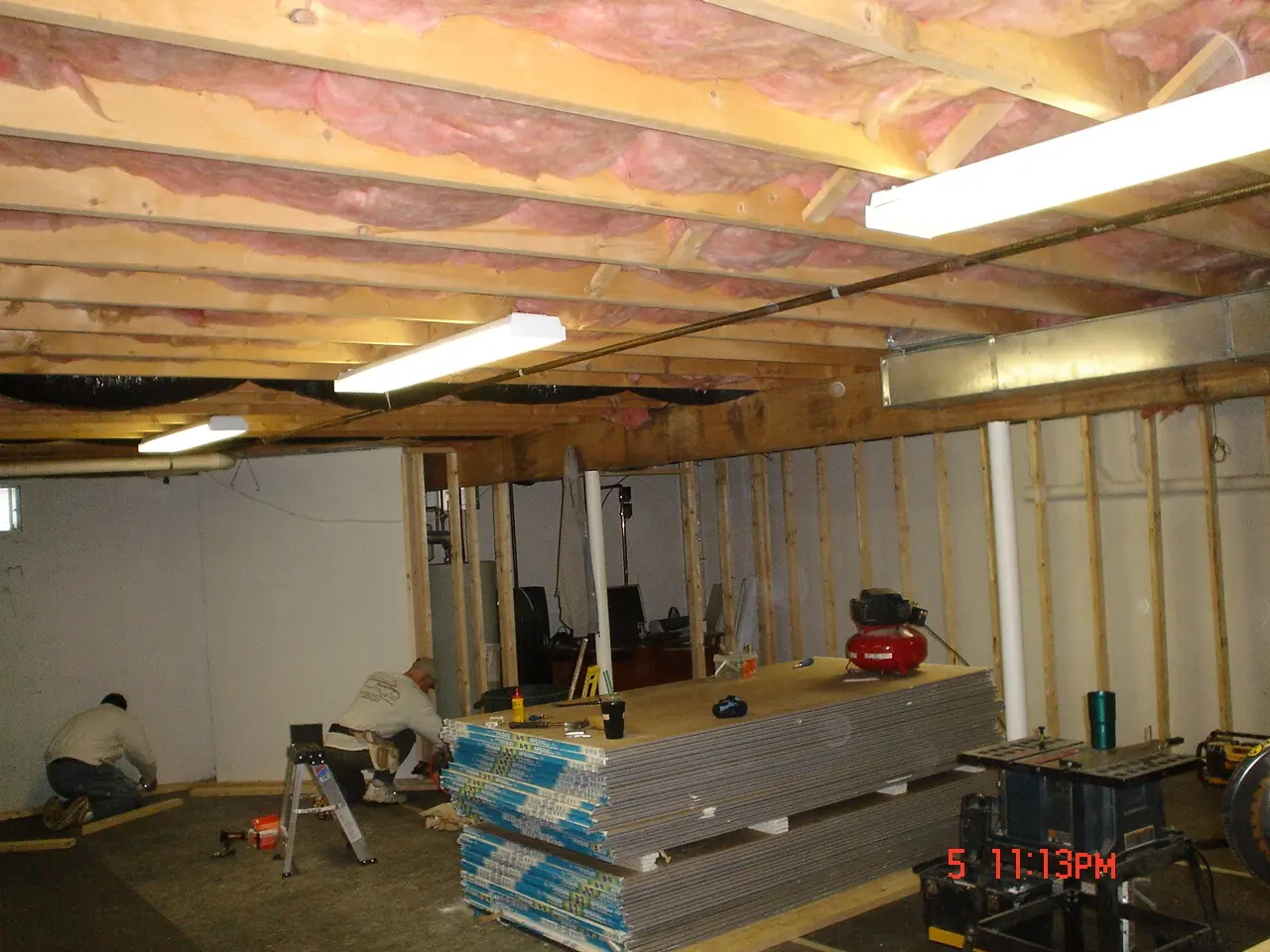Have you been thinking about how to soundproof a finished basement ceiling?. Well, it is not surprising because with a lot going around the world recently, the basement can be the quietest and comfortable place to work from or perform other activities that require quietness.
With a finished basement ceiling, some soundproofing techniques will be more effective than others. In this case, we are talking about soundproofing the ceiling without reconstruction.
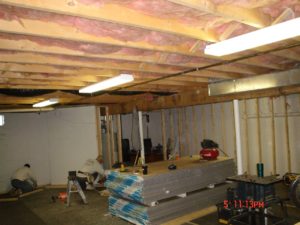
The key to soundproofing a ceiling is adding mass and sound isolation. If you can add extra mass to the existing ceiling, you will be increasing the STC of the ceiling.
Sound isolation is also best than with resilient channels and clips during the construction of the ceiling. Using them after the ceiling is finished isn’t always that effective. Unless you are willing to rip the ceiling apart and install them first or you are dropping the ceiling.
So below are some of the techniques you can use to soundproof your finished ceiling without starting all over again.
How to Soundproof a Finished Basement Ceiling
1. Deal with the Floor Above the Ceiling by Carpeting it
If you are hearing a lot of noise in the basement from the upstairs rooms, it is always best to deal with noise at the source. Therefore, footsteps, stomping, and other loud noises can be deal with. You can do this by installing a thick floor carpet or place a thick rug pad on the floor.
Any thick flooring that can absorb or block the noise is a better idea. The best way is to lay a carpet covering the entire floor especially if you have kids that run around placing. You can also get a nice thick rug pad and place it on the area of the floor where the working is predominant.
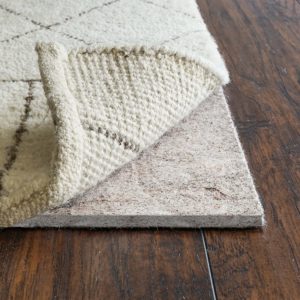
The thick material will dampen the movement noise before it gets to the basement. You can also rearrange the room.
Arranging the room with furniture, sofa, and other sound-blocking items will lessen the sound energy before it reaches the basement.
2. Use Soundproof Acoustic Panels
The good thing about these soundproof panels is that they can be installed directly on the ceiling. If it’s self-adhesive, you just need to peel and stick it otherwise, you simply get a foam tape and use it to help you install.
There are two types of acoustic panels; these are fiberglass acoustic panels and soundproofing foam panels. Soundproof acoustic panels are used to reduce echo and airborne noise.
These soundproofing foam panels come in different shapes, sizes, colors, and thicknesses. These are quite cheap and very effective at reducing airborne noise but not that great at impact noise.
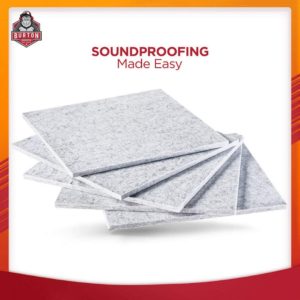
If you want to reduce impact noise such as footsteps, vibration, stomping, washing machine, etc and also airborne noise such as TV and conversations, then I suggest you get the fiberglass panels.
Both types of panels can be installed on the ceiling and they are easy to remove in case you don’t want them again. You will have your clean ceiling back.
In case you choose these panels, you would want to cover the basement ceiling as much as possible with a concentration around where you hear the noise most. This way, the noise will reduce more than just installing only one or two panels. That won’t do much.
3. Green Glue Soundproofing Compound
Green glue is one of the common soundproofing compounds in the market. The way this compound work is its ability to convert sound energy into heat energy. It is very effective at sound insulation and you can use it dampen noise.
Ceilings age and get cracks on them, you can you this compound to seal the cracks and gaps in between. You can also fill any hole you see like electrical outlets with big holes.
4. Add Mass Loaded Vinyl Mat to Ceiling
If you are dealing with a lot of impact noise from upstairs, it will be a good idea to install a mass loaded vinyl mat on the ceiling. Vinyl mats are very effective at impact and structural noise. Its a nice thick and dense material that has great soundproofing abilities.
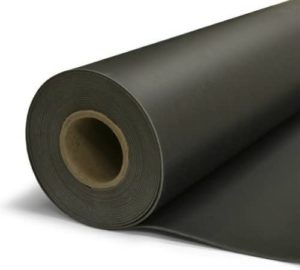
It is very versatile in use as well. It serves as sound-absorbing and blocking material. You can use it in any part of the room. Whether the ceiling, walls, door or even the floor.
MLV is an extremely popular soundproofing material used in vehicles, walls, floors, and small objects like generator boxes. Some of the reasons why people like it is that it’s an acoustic material, it can withstand high and cold temperatures, durable, it’s easy to and straight forward to install, and it’s great at blocking both impact and airborne noise.
You can install the mass loaded vinyl mat by fastening it to the basement ceiling using nails or using a pneumatic stapler to staple it. Placing them 10 inches apart.
5. Adding Extra Mass with Green Glue and Drywall
Adding additional layer/layers of drywall will increase the mass of the ceiling thereby increasing the noise reduction rating of the ceiling. One way you can do this is that you add two layers of drywall with green glue in between the joists.
The green glue compound will serve as a sandwich between the two drywall. In this way, we can dampen the vibrations of the floor above as best we can directly at the source, you will be adding additional mass to the existing ceiling and also sound-absorbing the noise.
You can even choose to add the mass loaded vinyl mat in between the two drywalls with the added green glue compound. This will increase the overall STC of the ceiling.
This type of installation will require more than one person to install. After the installation uses the green glue to seal off the joists. You might need to get a caulking gun to help you pump the green glue compound to the drywall spreading it out nicely.
6. Paint the Ceiling with soundproof Paint
Soundproof paint is usually made of thick materials such as latex. These materials reflect sound to the source, thus reducing the amount that gets transmitted.
Because it is very thick, soundproof paint can get rid of at least 30% of the sound waves passing through your basement ceiling.
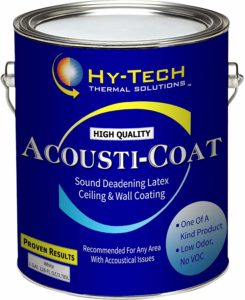
So, instead of just painting the ceiling with ordinary paint, get this sound deadening paint and finish the seal up to give you a nice finish plus sound deadening abilities.
For more effectiveness, apply about three layers of the paint to make it thick. Thicker the better. The paint alone can only work for mild noise but not loud sounds.
Similar Reads:
Cheap Sound insulation ideas for basement ceiling
Easy ways to soundproof footsteps and impact noise
Final Words on Soundproofing Existing Ceiling
There are so many ways on how to soundproof the finished basement ceiling. It will all depend on your pocket and how much effort you are will put into it.
The techniques outlined above all work but some are more effective than others. Combining two or more methods will make it more effective. Some techniques are tailored toward impact noise and airborne noise combine while other techniques will be more effective with airborne noise like the soundproofing foam panels.
You will have to look at which type of noise is predominant and start your soundproofing plans from there. You are looking at reducing echos, then soundproof acoustic panels will do. For impact noise like footsteps and vibrations, you will need to increase mass with drywall, mass loaded vinyl, carpet the floor above and use paint the ceiling to give it a good finish.
- How to Chew Quietly While Eating-Effective Tips - April 14, 2023
- Why is My Clutch Pedal Squeaking – Causes & Fixes - April 14, 2023
- Propane Tank Making Hissing Noise (Solved) - February 25, 2023

